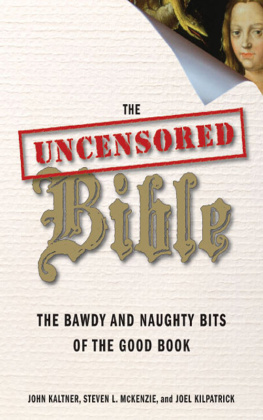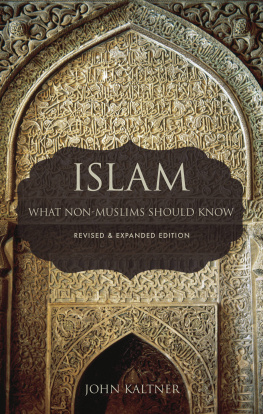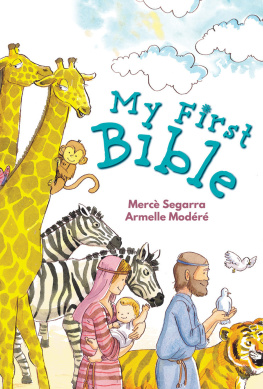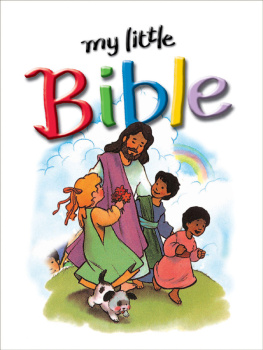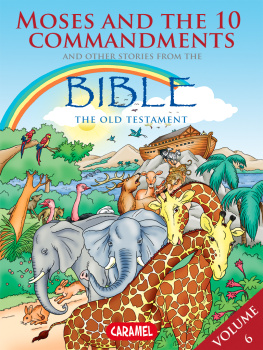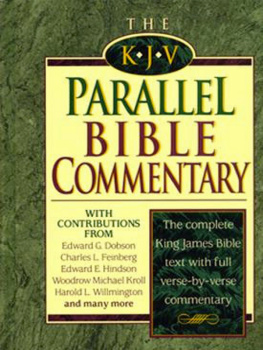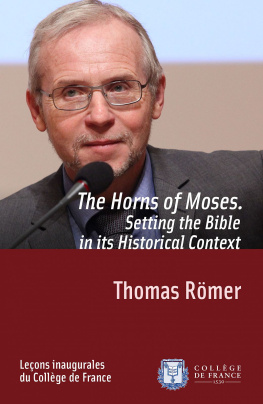To C.E.W.
Writing a book shouldnt be this much fun. From start to finish weve had a rollicking time, and along the way weve benefited from the feedback of friends and loved ones. First, wed like to thank the Eves in our lives, Debra Bartelli and Aimee McCarley, for their suggestions and encouragement. They, better than anyone, know what its like to put up with a middle-aged Bible scholar whos become obsessed with his latest project.
Several people associated with Rhodes College, in Memphis, Tennessee, read drafts of some of the chapters and provided helpful comments on our work. A special thanks to Bob Johnson, Mike LaRosa, Spence and Becky Wilson, and Karen Winterton.
We tried out some of the material in this book with a group of adult students in Rhodess Meeman Center for Continuing Education. The Bawdy Bible turned out to be one of those special experiences that teachers live for and convinced us that we were on the right track with the book. The class, now a tight circle of friends, consisted of Phyllis and Tandy Brannon, Gloria Gang, Marshall Gordon, Jimmy Humphreys, Jim Johnson, Martha Kelly, Ed Murphey, Martha Robbins, and Norm Shapiro.
Steve has also been able to sneak sections of The Bawdy Bible into his course offerings for Rhodes students over the past two years. As is typical of our students, they taught him more than he taught them, with observations about these ancient texts and their modern interpreters that were innovative and insightful.
Our agent, Gary Heidt, is one of those rare individuals who believe theres a place in the world for a book on weird Bible stories and interpretations. He helped us give shape to our original concept and found the perfect publisher for the book. HarperOne was our dream choice from the beginning, and were thrilled that Gary was able to land the book with them. It has been a great pleasure to work with Kris Ashley of HarperOne. She is an outstanding editor, and we very much appreciate her guidance and enthusiasm.
Finally, we are deeply grateful to our co-author Joel Kilpatrick, who has helped us turn unusual but still dry Bible scholarship into entertaining reading. We thought we were funny guys until we read our manuscript after Joel had spun it. We laughed out loud at least once on nearly every page, but we recognize that everyone may not share our perverted sense of humor. We take full responsibility for the discussions and judgments about Bible scholarship in this book. But Joel is to blame for any jokes that fall flat.
John Kaltner
Steve McKenzie
In the Beginning;
or,
How John and Steve Got the Idea
for Writing This Book
There we were, enjoying the cool air and a couple of adult beverages in the middle of summer in Nova Scotia. We had escaped the sweltering heat of Memphis, Tennessee, where we live and teach, to attend a conference of Bible scholars. But we werent exactly at the conference at the momentwe were in a nearby bar playing hooky and relaxing. Who could blame us? We had endured dust-dry seminars with names like Observations on the Hebrew Narrative of Genesis 2:44:1 and worse. Even highly trained ancient language scholars like us can take only so much before heading for the nearest watering hole.
But instead of discussing the fine weather, sports, or the sad demise of the Canadian stubby, we found ourselves talking about the presentation wed just heard. To our surprise, it had not been the tedious analysis of the Garden of Eden story wed expected, as would have been typical fare for such a gathering. Rather, it was one of the most unusual, provocative, andyessexy presentations we had ever heard at a Bible conference.
The presenter was a guy named Ziony Zevit (great name, huh?), who is a well-known and respected scholar at the American Jewish University (formerly the University of Judaism in Los Angeles, California). In his analysis of the Adam and Eve story, Zevit suggested that the commonly held belief that Genesis describes Eves creation from Adams rib might be wrong. It is more likely, he argued, that the text refers to Eves creation from another bone, the baculum . That probably doesnt sound shocking to you now, but just wait until you read chapter 1 and learn what the baculum is. We were blown away by Zevits proposal. His idea was clever, creative, and off-color enough to make for interesting bar talk. It had the added benefit of being highly plausible.
Zevit had actually published his suggestive theory in an obscure medical journal, but it hadnt exactly gotten him on Letterman. As we enjoyed our margaritas and mojitos, we began to shoot the bull about how many other provocative and impolite interpretations of Bible passages get published only to circulate briefly in the rarefied air of Bible scholarship before dropping from sight. Turns out, quite a few. That evening, perhaps intoxicated by the Canadian air and the bartenders liberal pouring methods, we decided to compile a collection of weird and bawdy Bible stories and interpretations for wider circulationa sort of Baedeker to gross, risqu, and deliciously disgusting Bible scholarship for the common man and woman.
We were not just interested in looking at odd interpretations of the Bible. There are plenty of those out there. Our focus was on interpretations that are unusual but viable and that have been offered by not just anybody but by people who are bona-fide Bible scholars. So we rigorously applied what we call the Zevit Standard to the long list of potentials that we initially compiled. The Zevit Standard consists of four criteria:
- The proposed interpretation has to be innovative and unusual. By unusual we mean outrageous, juicy, and ribaldthe stranger the better.
- It has to offer a new take on a familiar Bible passage. Most of the stories and people we cover in this book will be familiar to you.
- It has to be plausiblewell argued and worth serious consideration.
- It has to be authored by someone trained in biblical studies. Usually this means a person with a PhD in biblical studies who makes a living teaching the Bible in a college, university, or seminary. The few exceptions in this book are people who are self-trained, have published books on the Bible, and have gained a certain expertise.
The Zevit Standard still left us plenty of interpretations to choose from, and we whittled those down to a manageable two dozen or so of our favoritessome of which will surely surprise you as much as they did us.
No Bible Bashing, Please
We want to make it clear that were not trying to make fun of the Bible. We love the Bible. In fact, part of what we hope to accomplish with this book is to help people appreciate the Bible more. We agree that the Bible should be read with reverence. But part of the Bibles richness stems from the fact that it comes out of and reflects real life in all of its complex beauty and weirdness. The Bible deals with the sublime and the very mundaneimportant issues like the meaning of life and the majesty of God, but also such run-of-the-mill matters as breeding animals and managing your own sex life. Since the Bible comes from a different time and culture, modern readers may tend to miss or misunderstand some of those earthy texts, especially if our focus is on the divine and holy. We hope this book increases readers appreciation for the richness and diversity of the Bibles contents.
We also arent out to ridicule Bible scholarship. Heck, were Bible scholars ourselves. We have doctoral degrees from universities that, at least until this book was published, were respected institutions of higher learning. We also teach Bible in a liberal arts college, although its our wives who really earn a living for us. We love what we do. And we love our fellow Bible geeks, erscholars.

